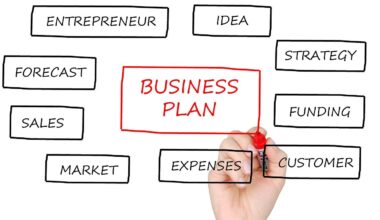How to Use Personal Loans to Build an Emergency Fund
Building an emergency fund is a crucial step in personal financial management. With unexpected expenses such as medical bills or car repairs, having a safety net is essential. Personal loans offer a viable solution to jumpstart your emergency fund. Although commonly perceived as debt, a personal loan can provide quick access to cash, helping you secure your financial future. Start by evaluating your current financial situation and determine how much you need for your emergency fund. Experts often recommend saving three to six months’ worth of living expenses. Once you know your target amount, research various personal loan options available to you. Lenders offer differing interest rates and repayment terms, allowing you to choose a loan that fits your budget. Ensure you understand the conditions before proceeding. Favorable loan conditions can alleviate much of the potential stress caused by borrowing for an emergency fund. Use a personal loan wisely, ensuring it contributes positively to your financial health long-term. Addressing debts intelligently can transform your financial stability and foster peace of mind. Building your fund effectively places you ahead of the game during any sudden financial challenges.
Consider the impact of interest rates on your personal loan when planning to build your emergency fund. A high interest rate can negate the benefits of borrowing, leading to further financial strain. Conversely, a low-interest personal loan can accelerate your savings journey. Focus on accountable borrowing; take out a loan amount that you can feasibly repay. After securing your loan, consistently deposit funds into your emergency fund. Commit to a monthly savings plan that prioritizes contributing toward your goal. Even small, regular deposits can accumulate over time, considerably enhancing your financial cushion. This strategy provides structure in your savings process. Additionally, consider automating your savings transfers, ensuring funds are routinely set aside for emergencies without manual effort. Review your budgeting habits regularly to identify areas where you can cut back. Rethink discretionary spending, allowing you to allocate more funds to your emergency savings. Another important technique is monitoring your spending patterns over time. This empowers you to make informed decisions and adjusts your budget as needed to meet your savings targets. Remember, your goal is financial security, and incremental progress leads to substantial achievements.
Understanding Your Loan Options
When opting for a personal loan, it’s essential to assess the different types available. Generally, loans can be classified into secured and unsecured categories. Secured loans require collateral, such as your car or home, reducing the lender’s risk but placing your assets at potential risk. Unsecured personal loans, however, do not require collateral, increasing the overall risk for lenders and, typically, resulting in higher interest rates. Determine which loan type aligns with your situation. Additionally, evaluate the repayment terms. Some loans offer favorable conditions, making them attractive options. Shorter repayment periods often come with less interest paid over the life of the loan, but may incur higher monthly fees. Weigh these aspects carefully against your financial capabilities. Shop around for competitive rates from multiple lenders since rates can vary significantly. Using online comparison tools can save you resources while seeking the best deal. Transparency is crucial throughout the loan application process; read the fine print to avoid hidden fees. Keep your credit score in focus, as better credit can secure lower interest rates, optimizing your overall savings when establishing your emergency fund through a personal loan.
Another crucial aspect of using a personal loan to build your emergency fund is maintaining discipline throughout the borrowing experience. Once you receive the funds, avoid the temptation to use them for non-emergency expenditures, keeping your purpose in mind. Allocate the entirety of the loan towards your emergency fund, ensuring you align with your original goal. Create a separate savings account specifically for this purpose. This designated account reduces the risk of mixing funds and promotes intentional savings behavior. Set clear milestones to track your progress toward reaching your goal. Celebrate small victories along the way to stay motivated throughout your savings journey. Moreover, make a commitment to reduce any additional debt while you are building your emergency fund. By focusing on your loan payments and saving, you foster a healthier financial lifestyle. Adjust your lifestyle choices to accommodate your new financial plan; adopt frugal habits and identify expenses that can be cut. Engaging in budgeting forums or communities can provide support and accountability, amplifying your resolve to achieve financial stability. Adhering to a well-defined plan protects your interests as you work towards financial independence.
Preparing for Future Financial Challenges
Once you establish your emergency fund, preparation for unforeseen financial challenges becomes essential. An adequate fund safeguards against emergencies, prompting proactive financial management. Stay vigilant about monitoring your fund regularly, confirming it aligns with your present living expenses. Reassess your savings goals, especially when facing lifestyle changes, such as a new job or changing family dynamics. Adjustments may require recalculating the necessary reserve for your emergency fund. Ensure your fund remains adequately padded by accounting for possible inflation which might increase future living expenses. Consider replenishing your fund after using it for an emergency. Life is unpredictable, and you never know when you might need to dip into your savings. Continue to contribute regularly, focusing on building habits that enhance your financial security. You can consider reviewing your progressive strategies during these assessments. Positive habits around saving can lead directly to enhanced peace of mind. Financial health is an ongoing project, requiring proactive engagement with your resources. This process deepens your understanding of financial management while evolving as your financial and personal situations change. Choose to invest in your financial future knowingly and responsibly.
Incorporating the learning process into your journey can strengthen your financial knowledge while navigating challenges. Explore personal finance resources such as workshops, blogs, and podcasts dedicated to fostering a deeper understanding of savings strategies. Engaging with others who share similar goals can inspire motivation for achieving your own financial aspirations. However, be cautious; not all information is reliable or current. Focus on credible sources while seeking advice regarding personal loans or savings strategies. Use actionable insights to refine your plans effectively. Networking with knowledgeable financial professionals can also provide valuable insights, especially if you find the personal finance world intimidating. Don’t hesitate to ask questions; even financial advisors have started somewhere. Connecting with a community of like-minded individuals fosters positivity and accountability. Stay informed on fraudulent activities or dangerous lending practices that could jeopardize your financial security. Use your experiences to guide your peers in making conscious choices regarding personal loans and emergency funds. Knowledge is power, and effective financial management begins with awareness and practice. Your journey toward financial stability will enhance your overall lifestyle and promote long-term health.
Conclusion
Utilizing personal loans to build an emergency fund may seem counterintuitive, but with careful planning and discipline, it can be a beneficial strategy. Ensure you understand the intricacies involved, and weigh your choices before proceeding. Start by evaluating your financial needs and determining an appropriate loan amount that effectively meets your goals. Focus on responsible borrowing while emphasizing the importance of saving regularly, allowing your emergency fund to grow and thrive. Navigate the loan landscape thoughtfully, and stay committed to making sound financial decisions. In doing so, you’ll not only fortify your financial foundation but also cultivate habits that promote long-term economic wellbeing. Embrace the learning process, allowing it to enhance your skills in financial planning. With proactive guidance and strategic decision-making, your personal loans can transform into a valuable asset. Ultimately, being prepared for unexpected situations shields you against potential dangers, creating a sense of stability in life. Creating an emergency fund is undeniably indispensable, and taking ownership of your financial future is vital. Engage with knowledge and resilience to foster sustainability in the management of your finances, ensuring a firm grasp on your financial destiny.
Engaging with financial education is essential to sustainable personal finance management. As you embark on your journey towards better financial health, consider participating in webinars, attending financial literacy classes, or accessing online materials that can enhance your knowledge. The more informed you are, the more empowered you become regarding making the right financial decisions. Use reputable resources—such as government websites or recognized financial institutions— to deepen your expertise in budgeting, saving, and responsible loan usage. Practical knowledge blazes the trail to success in managing loans effectively while avoiding common pitfalls. Moreover, establish a supportive community to share experiences and glean insight from others navigating similar journeys. Social media platforms and online forums offer safe spaces to exchange ideas and solutions. Your learning should not stop with securing a personal loan; continuous education enhances your adaptability to shifts in the financial landscape. Remember, pursuing financial literacy is a lifelong commitment that pays dividends throughout life. So, as you focus on building your emergency fund, embrace the journey as an opportunity for personal growth and financial empowerment—investing in yourself yields the greatest returns over time.


